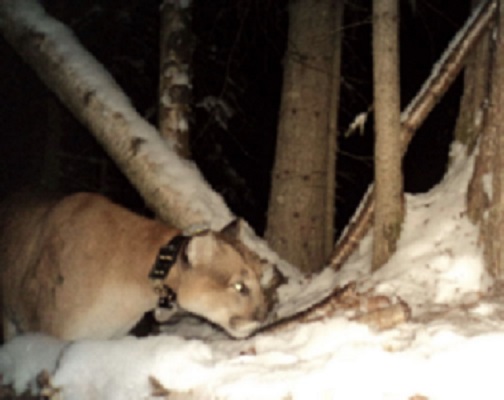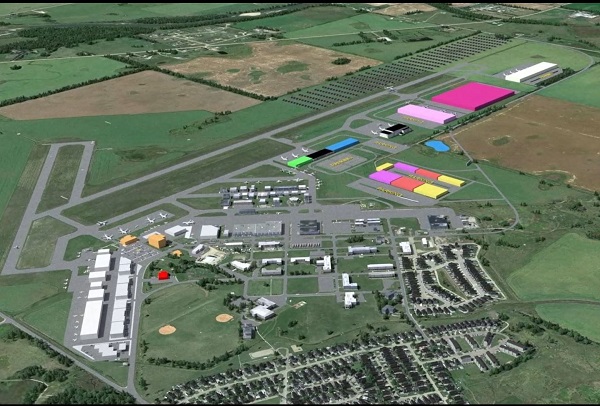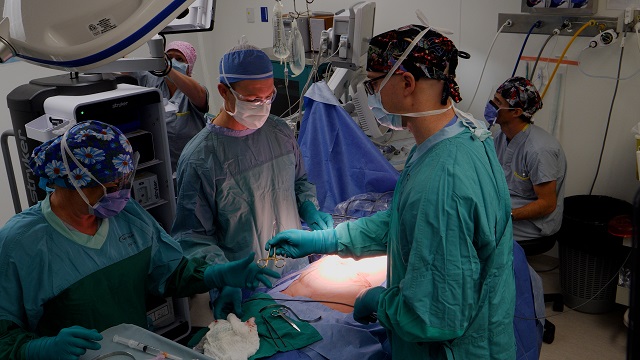Central Alberta
Red Deer River Naturalists invite you to AGM on January 25

From the Red Deer River Naturalists
Annual General Meeting – January 25
6:30 to 7:00 General Meeting
7:00 to 7:45 Wine and Cheese
7:45 to 8:45 Lorne Fitch Presentation
Lorne Fitch is a professional biologist, a retired provincial fish and wildlife scientist and a former adjunct professor at the University of Calgary. He is also the co-founder of a very successful riparian stewardship initiative called Cows and Fish. He has been widely recognized for his conservation efforts.
BOARD NOTES: Rick Tallas, President
• Wow 2024 has arrived, as the days slowly get longer, I am looking forward to RDRN continuing to offer our programs. They include our monthly meetings featuring excellent speakers, our Focus Groups (Bird, Flower), Central Alberta Birding Trails, Red Deer Birding Trails, Nature Central, Habitat Steward, Christmas and May Species counts, our scholarship program and our grant program.
• Please view our outstanding websites: www.rdrn.ca, www.birdingtrailsalberta.com and www.naturecentral.org. Also join our RDRN social media: Facebook, Instagram and X.
• We thank Judy Boyd again for her many years of coordinating our May Species Count and Christmas Bird Counts. We welcome Shelley-Anne and John Goulet as our new bird count coordinators!
• I look forward to the Adopt-a-Stream program being officially announced, in conjunction with the City of Red Deer and Kerry Wood Nature Centre.
• I would like to extend my deepest appreciation to our volunteers and all of our members who support us through membership renewals, donations and by attending our monthly meetings.
• A big shout out to our Board of Directors.
• Please email us if you are interested in volunteering or joining the board. (rdrn.nature @gmail.com)
• Happy 2024 to everyone!
DID YOU KNOW By Susan van der Hoek
A group of gulls is called a squabble, colony or flock. There is no specific bird called a seagull and it is interesting that we call them thus in landlocked Alberta. Gulls are a diverse family of birds with different habitats, ranges and colour patterns. There are ten species of gulls and terns in Alberta. Gulls have hooked beaks and terns beaks are straight. Terns have webbed feet.
Left, from top: Herring Gull (left), Ring-billed Gull, California Gull, Franklin’s Gull; Right, from top: Bonaparte’s Gull, Black Tern, Forster’s Tern, Common Tern

Herring Gull (Larus argentatus)—occupies farmland, bays, beaches, lakes, piers and landfills.
Ring-Billed Gull (Larus delawarensis)—occupies inland locations, piers, large bodies of water, landfills, adapted to human-disturbed areas, common in cities and parking lots.
California Gull (Larus californicus)—occupies lakes, cities, farms, plowed fields, follows farming equipment.
Franklin’s Gull (Leucophaeus pipixcan)—occupies fields, prairies, flooded pastures, marshes, lakes and follows farming equipment.
Bonaparte’s Gull (Chroicocephalus philadelphia)—occupies bays, lakes, rivers, sloughs and sewage lagoons.
Short-billed Gull (Larus brachyrhynchus)—occupies shoreline of lakes and rivers, wet fields, pastures, landfills and sewage lagoons.
Black Tern (Chlidonias niger)—occupies wetlands with extensive vegetation and open water, river edges, lakes, marshes, sewage lagoons and beaches.
Common Tern (Sterna hirundo)—occupies aquatic habitats, lakes, bays and beaches.
Forster’s Tern (Sterna forsteri)—Occupies lakes, marshes and wetlands.
Caspian Tern (Hydroprogne caspia) Occupies rivers and lakes.
In The Alberta Wilderness! By Don Auten
The cougar population in Alberta has been increasing for the last few years. Although they are most common in the boreal forest in western and northern Alberta, they have been expanding their range and are now found across the province. They are adapting well to living near people and that results in more human/cougar contacts.
Because of this increasing contact, it is important to understand how humans and cougars can successfully co-exist. In Alberta, to learn more about cougar ranges and behaviors, a cougar study has been ongoing for several years. About 100 cougars have been captured and equipped with GPS collars and their activities are being remotely monitored.

This trail cam photo is the first of three collared cougars I have captured over the last few years. I shared this photo and time/location with the Biologist who is involved in this study and from her data she was able to determine that this is Cougar #99. This female had two kittens when they collared her, and they were able to collar one of the kittens as well. Reviewing her data, she could also see that the collared kitten was with the female at this location.
My camera also caught a photo of a kitten without a collar, so the biologist knew that the cougar family was still intact and doing well.
AGM with a Flair!
We look forward to hosting a large crowd at our January 25th meeting. The AGM will start at 6:30 PM and be over by 7:00 PM. We encourage members to attend the AGM, but will also welcome everyone at 7:00 PM for a wine and cheese reception for Lorne Fitch. Lorne will sign books and give a short presentation. His presentation will be followed by a Q and A session as well as more refreshments! We hope to see you there!
Christmas Bird Count 2023 Summary: From The Red Deer Advocate: December 29, 2023 (by Lana Michelin)
Geese a plenty were found in this year’s Christmas Bird Count. With warm temperatures and open water available all around central Alberta, some 1,557 Canada geese were counted in the region this month. This falls just short of the record number of geese counted in December of 2017 — some 1,971.
But it’s a huge difference from the zero geese spotted in the -30 C weather during last December’s bird count.
Count organizer Judy Boyd, of the Red Deer River Naturalists, believes the unusually mild conditions so far this winter mean there was no real reason for geese to fly south. Migration takes a heavy toll on them, she added. “They have to stop to feed, to fatten up, and then keep going. Think of how far some birds have to fly — to the Gulf of Mexico.” In between, they must navigate many hazards, including hunters and predators, greater exposure to avian flu, and large cities with misleading artificial lights and tall glass buildings.
Boyd said a Toronto group goes around collecting the thousands of carcasses of birds killed flying into skyscrapers. Given these odds, staying put where there’s enough food and water makes sense, she added.
Another oddity in this year’s bird count — which was conducted by about 85 central Alberta volunteers on Dec. 25 — was the early return of some horned larks. Boyd said they are supposed to arrive in this area in January, but some have come a month early. She isn’t sure whether the mild weather also played into this unusual behavior.
As well, the lack of giant flocks of redpolls, bohemian waxwings, and snow buntings were noticed. Usually several hundreds of these birds can be seen flying together in the winter months, said Boyd.
But during this year’s bird count, some flocks spotted were as small as 25 to 35 birds. She feels this might just be an incidental observation on that particular day, since she’s seen some larger flocks earlier in the season. However, ornithologists have recorded changes to some bird populations over the last few decades. Boyd read that many California juncos have stopped migrating out of that State and are instead nesting there, while barn swallows are inexplicably sticking around in Argentina. “Maybe it’s climate change, I don’t know…”’
While no completely out-of-province birds were seen during this month’s bird count, Boyd knows a few were reported earlier this season. A Harris’s Sparrow was seen in central Alberta, even though it’s supposed to nest in the Northwest Territories and head to the central U.S. for the winter. A killdeer was spotted at Riverbend — although this bird was supposed to now be in the southern U.S. and Gulf area. And an out-of-season American Kestrel was also seen.
But perhaps the strangest report was of a Eurasian eagle owl at someone’s bird feeder. Boyd said she has no clue how this exotic bird could have blown so far off course as it normally travels between Siberia and Ethiopia.
The annual Christmas Bird Count is done to compile one of the world largest sets of wildlife survey data. The results are used to assess population trends and the distribution of birds. Another bird count will be done in May.
Bird Focus Group with Chris Olsen
Acknowledgements:
• Thanks to an initiative from Bob Krutchen, we applied for a Red Deer Community Better Participaction grant in the spring and were awarded a $1,000.00 grant. We used those funds to purchase two pairs of Nikon 5 10 x 40, binoculars that new birders used on a number of our outings.
• Ron Bjorge hosted our Riverbend Upper Trails outing on June 3 and provided a species summary for the Ferry Point weekend outing. John and Shelley-anne Goulet hosted our Michael O’Brien Wetland outing on August 12.
• Susan van der Hoek provided route maps and trip descriptions for the RDRN website events calendar and posted our trip summaries and eBird reports on RDRN social media.
2023 Summary:
We started our Spring/Summer schedule Mar 19th , with a trip to Carburn Park in Calgary, taking advantage of the diversity along the open waters of the Bow River. Between March 19 and December 9, we hosted 32 outings.
Notables this year included the Wainwright Sharp-tailed Grouse watch and the Tofield Snow Goose Festival. Longer trips included Carburn Park in March, Wainwright in April, Bigelow Reservoir and Open Creek in July, and Frank Lake in August. Unfortunately, our Dry Island trip was cancelled due to rain – we did Riverbend in lieu. Note that our summary numbers do not include the Wainwright trip, May species count or the Ferry Point weekend, although many Bird Focus Group regulars also participated in one or all of those. With the above exceptions then, our 32 outings traversed 152.3 km, and collectively 339 participants documented 138 bird species (an increase of 10 species over last year). All bird observations and tracks were recorded with eBird. Species ‘hot spots’ this year were Kuhnen Park (49), Alix Lake (43) and Riverbend upper trails (38).
Thanks to everyone who joined us this year to date. Our Bird Focus Group email list includes about 80 people, and thanks to Susan’s diligence you can always see our weekly summaries and eBird reports on social media. We remain an inclusive group that learns together. New participants
are always welcome so join us when you can!
The Red Deer River Naturalists, the first natural history organization to be established in Alberta, was incorporated as a society in 1906. The objectives of the society are to foster an increased knowledge, understanding and appreciation of natural history, and to support conservation measures dealing with our environment, wildlife and natural resources.
Annual membership is $15.00 for individuals and $20.00 for families. Regular meetings are held at 7:00 PM on the fourth Thursday of most months at Kerry Wood Nature Centre. Non-members are welcome.
Members are encouraged to contribute to this newsletter. The deadline is the last Friday of the month.
Box 785 Red Deer, AB T4N 5H2 Phone/Fax: 403.347.8200
[email protected]
www.rdrn.ca
wearenaturalwise.blogspot.com
Twitter #RDriverNats
Instagram @RDriverNats
Cover Poster by Doug Pedersen
Photos, unless otherwise noted, by Myrna Pearman
RDRN Social Media:
1317 Facebook Members
310 X Followers
446 Instagram Followers
Our thanks to McElhanney for generously donating the printing of this newsletter and NOVA Chemicals for covering postage costs.
Alberta
Province boosts development strategies at Regional Airports

Proposed area for development at Red Deer Regional Airport highlighted by bright colours
Building Alberta’s regional airport network
Alberta’s government is investing $1.13 million to support the development of regional airports across the province.
Alberta’s regional airports connect people, create jobs and help local businesses reach new markets. This investment will facilitate the growth of the province’s regional airport network, enabling the seamless movement of people and goods, and creating more opportunities for municipalities and local industry to thrive.
“Alberta’s aviation industry plays an important role in strengthening and diversifying our economy by expanding access to markets and creating jobs in the province. Regional airports are key assets in supporting the air sector and the movement of people. This investment will support the growth of Alberta’s regional airports and help restore and develop connections between our regional and international airports.”
The grant funding will support 10 regional airports in developing business cases and feasibility studies for improved airport infrastructure and air transportation. The projects will allow the airports to identify, explore and prioritize improvements and opportunities to increase their economic competitiveness, such as increasing the number of air carriers or the efficiency of aircraft movement to bolster the economic output of regional airports.
“Regional airports play a critical role in keeping Alberta connected and our economy growing. We are working with our partners to ensure all corners of the province are in the best position to attract job-creating investment and opportunities from around the world for all Albertans.”
The grants include $120,000 to the Red Deer Regional Airport for a land development strategy, which will inform the airport about how it can leverage infrastructure and facility improvements, such as terminal expansion and airside land development, that will better position the airport as a hub for economic activity.
“The continued support from the province positions the Red Deer Regional Airport as a compelling and competitive location to do business. Now more than ever, we are primed to attract new investment opportunities, create jobs and strengthen central Alberta’s economic landscape.”
The funded projects vary in scope and size depending on the specific needs of each airport. They include exploring airport certification to support scheduled air services, airport commercial development, commercial air services, hangar development and development of strategic business cases to restore regional airports’ positions as primary transportation hubs.
“CAEP is proud to showcase the importance of the Red Deer Regional Airport as a true ’hub‘ in the Central Alberta Region. Transportation is critical to a thriving region that leads to sophisticated manufacturing, technological innovation and investment attraction to enhance and support our economic corridors. Continued growth at the RDRA is proof that the region is thriving and a ’destination of choice‘ for investment.”
The projects will also support the creation of an air service business case to attract new airlines, analyzing highest-need routes, determining baseline capacities of airport infrastructure, and identifying capital asset rehabilitation and replacement requirements.
“Regional airports support economic development and serve as a hub for emergency services for rural Alberta. The funding provided today will benefit many rural communities and represents a strong step in maintaining Alberta’s rural transportation network.”
This investment demonstrates Alberta’s commitment to growing the aviation sector and diversifying the economy. Alberta’s government will continue working closely with regional airports to ensure they are drivers of economic growth in the province.
Quick facts
A total of $1,129,424 is being provided to support 10 regional airports:
- Cold Lake Regional Airport
- Feasibility Study for Airport Certification to Support Scheduled Air Services – $144,000
- Whitecourt Airport
- Commercial Development Feasibility Study – $78,684
- Lloydminster Municipal Airport
- Commercial Air Services Feasibility Study – $113,988
- Peace River Regional Airport
- Peace River Airport Master Plan – $57,552
- Lethbridge Airport
- Hangar Development Feasibility Study and Business Case – $150,000
- High Level Airport
- High Level Airport Master Plan – $56,000
- Red Deer Regional Airport
- Land Development Strategy and Implementation Plan – $120,000
- Medicine Hat Regional Airport
- Feasibility and Business Case for Airport Growth and Development – $150,000
- Grande Prairie Airport
- Canadian Border Services Agency Facilities Study – $140,000
- Fort McMurray International Airport
- Business Case to Recapture Lost Passenger Traffic – $119,200
Alberta
Doubling surgical capacity in Rocky Mountain House

Rural Albertans will be able to access surgeries quicker and closer to home now that the expansion and renovation of the Rocky Mountain House Health Centre is complete.
The Rocky Mountain House Health Centre has been providing residents with health care since 1971, including surgical services. Alberta Infrastructure has completed an addition to the facility, which includes a new operating room. This will enable approximately 120 Albertans per month to receive surgery, doubling the number of monthly surgeries. This additional, brand-new operating room is also expected to decrease the wait lists for surgeries.
The expanded Rocky Mountain House Health Centre provides an additional 440 square metres (4,736 square feet) and includes:
- a new operating room,
- 6 additional recovery beds,
- a patient support area, and
- an updated medical device reprocessing department.
The new spaces can be accessed from the existing site thanks to the addition of an upgraded hallway that connects the two buildings.
“Completing the expansion and renovation of the Rocky Mountain House Health Centre is a significant step forward in delivering Alberta Surgical Initiative projects province wide. This investment into health care infrastructure will increase surgical capacity, helping Albertans get treatment when and where they need it.”
The Rocky Mountain House Health Centre upgrade is part of the Alberta Surgical Initiative (ASI), which aims to enhance surgical capacity across the province by expanding and maximizing existing health care space. Over the next three years, the 2024 Capital Plan is providing $313 million for ASI projects throughout the province.
Alberta Infrastructure and Alberta Health Services share the responsibility for delivering ASI projects. Alberta Health Services leads the delivery of smaller projects, while Alberta Infrastructure delivers capital projects over $5 million.
“Albertans deserve timely access to surgeries, and they should be able to get them close to home. The expansion and renovation of the Rocky Mountain House Health Centre will increase its capacity so more Albertans can get the surgeries they need when they need them. Through the Alberta Surgical Initiative, we are improving access to surgical care and funding projects across the province, including in rural communities like Rocky Mountain House.”
Alberta Infrastructure is working on 20 ASI projects in communities across Alberta, including Brooks, Calgary, Camrose, Edmonton, Fort Saskatchewan, Innisfail, Lethbridge, Olds, Ponoka, St. Albert and Stettler. Lethbridge will be the next community to benefit from a completed ASI project. The expansion of two operating rooms and more surgical inpatient rooms at the Chinook Regional Hospital is anticipated to be completed later this fall.
“The expanded Rocky Mountain House Health Centre will help ensure more residents can access surgeries and receive the care they need in a timely manner. Investments like these in rural Alberta matter and I’d like to thank Minister Guthrie and Minister LaGrange for delivering on this project that will double our surgical capacity in Rocky Mountain House.”
Quick facts
- The total budget for the Rocky Mountain House Health Centre ASI project was $15 million.
- This Alberta Infrastructure project was completed on time and on budget. Approximately 85 construction-related jobs were created during the project.
- In addition to the new building, other renovations include new mechanical and electrical building systems.
- Alberta Infrastructure is managing other ASI projects at the following locations:
- Brooks Health Centre
- Calgary
- Alberta Children’s Hospital
- Foothills Medical Centre
- South Health Campus
- Camrose – St. Mary’s Hospital
- Edmonton
- Grey Nuns Community Hospital
- Misericordia Community Hospital
- Royal Alexandra Hospital
- Walter C. Mackenzie Centre (University of Alberta Hospital)
- Fort Saskatchewan Community Hospital
- Innisfail Health Centre
- Lethbridge – Chinook Regional Hospital
- Olds Hospital and Care Centre
- Ponoka Hospital and Care Centre
- St. Albert – Sturgeon Community Hospital
- Stettler Hospital and Care Centre
- Other ASI projects completed by Alberta Infrastructure:
- Grande Prairie Regional Health Centre (completed in July 2022)
- University of Alberta (completed September 2023)
-

 COVID-191 day ago
COVID-191 day agoJapanese study finds ‘significant increases’ in cancer deaths after third mRNA COVID doses
-

 Business1 day ago
Business1 day agoMaxime Bernier warns Canadians of Trudeau’s plan to implement WEF global tax regime
-

 Brownstone Institute1 day ago
Brownstone Institute1 day agoA Coup Without Firing a Shot
-

 COVID-191 day ago
COVID-191 day agoWHO Official Admits the Truth About Passports
-

 Bruce Dowbiggin1 day ago
Bruce Dowbiggin1 day agoCoyotes Ugly: The Sad Obsession Of Gary Bettman
-

 Energy1 day ago
Energy1 day agoAnti-LNG activists have decided that they now actually care for LNG investors after years of calling to divest
-

 Freedom Convoy1 day ago
Freedom Convoy1 day agoOttawa spent “excessive” $2.2 million fighting Emergencies Act challenge
-

 Brownstone Institute1 day ago
Brownstone Institute1 day agoIs the Overton Window Real, Imagined, or Constructed?


